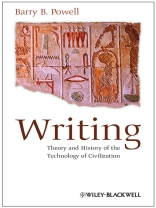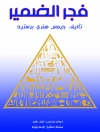Writing: Theory and History of the Technology of Civilization traces the origins of writing tied to speech from ancient Sumer through the Greek alphabet and beyond.
- Examines the earliest evidence for writing in Mesopotamia in the fourth millennium BC, the origins of purely phonographic systems, and the mystery of alphabetic writing
- Includes discussions of Ancient Egyptian, Chinese, and Mayan writing
- Shows how the structures of writing served and do serve social needs and in turn create patterns of social behavior
- Clarifies the argument with many illustrations
İçerik tablosu
List of Illustrations ix
Maps xiv
Preface xv
Chronology xvii
Introduction: A Difficult Topic, Little Studied, Poorly Understood 1
1 What Is Writing? 11
2 Writing with Signs 19
3 Categories and Features of Writing 38
4 Some General Issues in the Study of Writing 51
5 Protocuneiform and Counting Tokens 60
6 Origin of Lexigraphic Writing in Mesopotamia 70
7 Plato’s Ideas and Champollion’s Decipherment of the
Egyptian Hieroglyphs 85
8 Egyptian Writing and Egyptian Speech 100
9 The Origin and Nature of Egyptian Writing 108
10 “The House of Life”: Scribes and Writing in Ancient Egypt 120
11 Syllabic Scripts of the Aegean 128
12 The West Semitic Revolution 148
13 What Kind of Writing Was West Semitic? 163
14 The Origins of West Semitic Writing 175
15 Chinese Logography 187
16 Lexigraphic Writing in Mesoamerica 206
17 The Greek Alphabet: A Writing That Changed the World 227
18 Summary and Conclusions 245
Glossary 255
Bibliography 263
Index 270
Yazar hakkında
Barry B. Powell is Halls-Bascom Professor Emeritus of Classics at the University of Wisconsin-Madison. He has written extensively on ancient Greek literature and the history of writing. His books include Homer and the Origin of the Greek Alphabet (1991), A New Companion to Homer (editor, with Ian Morris) (1997), Writing and the Origins of Greek Literature (2001), and two editions of Homer (second edition, Blackwell, 2007).












